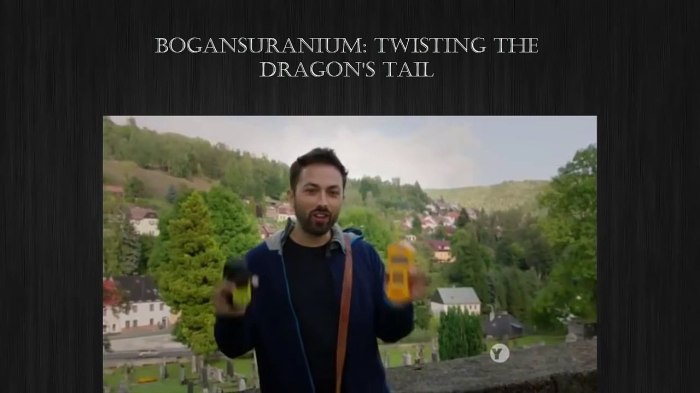With Uranium Twisting the Dragon’s Tail Part 2 Worksheet Answer Key at the forefront, this piece delves into the captivating world of nuclear science, exploring its historical roots, scientific principles, and far-reaching implications. Join us as we uncover the secrets behind uranium’s enigmatic power and its role in shaping our understanding of energy and global affairs.
Delving into the historical context, we trace the origins of the phrase “uranium twisting the dragon’s tail” and its significance in the development of nuclear weapons. Scientific principles of nuclear fission are meticulously explained, shedding light on the role of uranium in unleashing vast amounts of energy.
The technological implications of nuclear fission are thoroughly examined, showcasing its potential applications in electricity generation and medical advancements.
Uranium Twisting the Dragon’s Tail Part 2

Uranium twisting the dragon’s tail is a metaphor that refers to the scientific breakthrough in nuclear fission and the development of nuclear weapons. It alludes to the immense power unleashed by splitting uranium atoms, likened to the legendary feat of twisting the tail of a mythical dragon.
Historical Context
The phrase originated in the Manhattan Project, a top-secret U.S. government initiative during World War II that aimed to develop nuclear weapons. The project’s scientists, led by physicist J. Robert Oppenheimer, recognized the potential of uranium fission to release enormous amounts of energy.
The code name “Manhattan Project” was used to conceal the true nature of the project.
Scientific Principles
Nuclear fission is a process where a uranium atom’s nucleus is split into two smaller nuclei, releasing vast amounts of energy. This energy is harnessed in nuclear reactors to generate electricity or power nuclear weapons.
Uranium-235, a rare isotope of uranium, is used in nuclear fission. When a neutron strikes a uranium-235 atom, it splits into two smaller atoms, releasing two or three neutrons and a great amount of energy.
Technological Implications
Nuclear fission has had a profound impact on technology. Nuclear power plants generate electricity by harnessing the energy released from nuclear fission. Nuclear energy is a reliable and low-carbon source of electricity, contributing to energy security and climate change mitigation.
Nuclear medicine utilizes radioactive isotopes produced through nuclear fission for medical imaging and cancer treatment.
Ethical Considerations
Nuclear energy raises ethical concerns related to waste disposal, safety, and proliferation. Radioactive waste from nuclear power plants requires careful management and disposal to prevent environmental contamination.
Nuclear accidents, such as the Chernobyl and Fukushima disasters, have highlighted the potential risks associated with nuclear power. The proliferation of nuclear weapons poses a threat to global security.
Global Impact, Uranium twisting the dragon’s tail part 2 worksheet answer key
Nuclear energy has shaped international relations. The development of nuclear weapons has influenced geopolitical dynamics and nuclear disarmament efforts. The Non-Proliferation Treaty (NPT) aims to prevent the spread of nuclear weapons.
Nuclear energy cooperation and research contribute to global efforts in energy security, climate change mitigation, and nuclear non-proliferation.
FAQ Guide: Uranium Twisting The Dragon’s Tail Part 2 Worksheet Answer Key
What is the significance of the phrase “uranium twisting the dragon’s tail”?
The phrase symbolizes the immense power unleashed by nuclear fission, a process that releases vast amounts of energy by splitting uranium atoms.
How does nuclear fission work?
Nuclear fission occurs when a neutron collides with a uranium atom, causing it to split into two smaller atoms and release significant energy in the form of heat and radiation.
What are the potential benefits of nuclear energy?
Nuclear energy offers a low-carbon source of electricity, has the potential to reduce greenhouse gas emissions, and can provide reliable power generation.
What are the ethical concerns associated with nuclear energy?
Ethical considerations include nuclear waste disposal, the potential for nuclear accidents, and the proliferation of nuclear weapons.
What efforts are being made towards nuclear disarmament?
Various international treaties and organizations, such as the Nuclear Non-Proliferation Treaty, aim to prevent the spread of nuclear weapons and promote nuclear disarmament.


